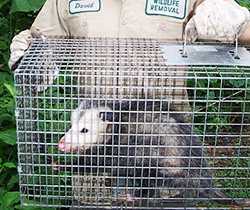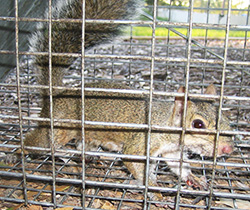- greaterlansing@aaanimalcontrol.com
Call 24/7 for a free quote:
517-219-1075
Greater Lansing Wildlife Control / Michigan Animal Removal
Michigan Animal Control, LLC - Animal Pest Control in Greater Lansing, MI. Call us: 517-219-1075

- Noises in Your Attic?
- Unwanted Wildlife?
- Bird or Bat Problem?
- Rodent Infestation?
- We Can Solve It!
Please, no calls about DOG or CAT problems. Call animal services: 1-800-292-7800.
Go to the Ingham County Animal Services page or read about cats or dogs.
 Michigan's residential, commercial, municipal, and industrial wild animal removal, relocation, & exclusion service! Sorry, we do NOT handle live domestic animals.
Michigan's residential, commercial, municipal, and industrial wild animal removal, relocation, & exclusion service! Sorry, we do NOT handle live domestic animals.
 Michigan Animal Control, LLC provides professional wildlife control for both residential & commercial customers in the
city of Greater Lansing in Michigan. We offer custom animal control solutions for almost any type of wildlife problem, whether
it be the noises of squirrels running through the attic, a colony of bats living in a building, animals digging in your yard, or
the destructive behavior of a raccoon or other critter, we have the experience and the tools to quickly and professionally
solve your problem. For a consultation and price quote, give us a call at 517-219-1075
Michigan Animal Control, LLC provides professional wildlife control for both residential & commercial customers in the
city of Greater Lansing in Michigan. We offer custom animal control solutions for almost any type of wildlife problem, whether
it be the noises of squirrels running through the attic, a colony of bats living in a building, animals digging in your yard, or
the destructive behavior of a raccoon or other critter, we have the experience and the tools to quickly and professionally
solve your problem. For a consultation and price quote, give us a call at 517-219-1075
Click here to check our prices updated for year 2024. There are many Greater Lansing pest control companies for animals out there, but not all of them are licensed and insured professionals. Make sure that you hire a competent expert for your Greater Lansing exterminator of wildlife. At Michigan Animal Control, LLC, we will be courteous and friendly and take the time to answer your questions. Give our Greater Lansing trappers at Michigan Animal Control, LLC a call, and we will listen to your problem, and make an appointment to perform an inspection. Feel free to email us at greaterlansing@aaanimalcontrol.com
 Resources for free wildlife removal in Greater Lansing
Resources for free wildlife removal in Greater Lansing
If you can't afford our pro wildlife work, you can try these agencies for free wildlife removal:
Ingham County Animal Services: 1-800-292-7800
Greater Lansing Wildlife Rehabilitation Agency: 517-663-6153
Greater Lansing Police Department: 517-483-4600
Michigan Wildlife Commission: 1-800-292-7800
How to get these services to provide free wildlife control? Learn
what to say on the phone for free Greater Lansing wildlife control.
 Michigan is full of wildlife, including snakes, squirrels, raccoons, skunks, opossums, and more. Wildlife removal is a complex field. I
recommend professional Greater Lansing wildlife control services if you want to solve a critter problem legally and correctly. For example, we specialize in animals in the attic, which have broken into the house
and almost always have a nest of baby animals. It is necessary to perform correct
preventative repairs to keep pest animals a out of your house for good. We perform full building inspection, do the
the repairs and we also offer attic decontamination if necessary. Rats and mice love to live in attics, and can chew wires or leave droppings. In fact
Greater Lansing wildlife
frequently enter homes, and correct removal is not a simple task.
Michigan is full of wildlife, including snakes, squirrels, raccoons, skunks, opossums, and more. Wildlife removal is a complex field. I
recommend professional Greater Lansing wildlife control services if you want to solve a critter problem legally and correctly. For example, we specialize in animals in the attic, which have broken into the house
and almost always have a nest of baby animals. It is necessary to perform correct
preventative repairs to keep pest animals a out of your house for good. We perform full building inspection, do the
the repairs and we also offer attic decontamination if necessary. Rats and mice love to live in attics, and can chew wires or leave droppings. In fact
Greater Lansing wildlife
frequently enter homes, and correct removal is not a simple task.
 DOG or CAT: If you need assistance with a domestic animal, such as a dog or a cat, you need to call your local
Ingham County Animal Services
for assistance. They can help you out with issues such as stray dogs, stray cats, vaccinations, licenses,
pet adoption, lost pets, and more. If you have a wildlife problem, you can try calling the Ingham County animal services, and see what they have to
say, but they will certainly not help you with a complex wildlife problem such as critters in your attic. They are a free government agency that
helps with dog and cat issues only.
DOG or CAT: If you need assistance with a domestic animal, such as a dog or a cat, you need to call your local
Ingham County Animal Services
for assistance. They can help you out with issues such as stray dogs, stray cats, vaccinations, licenses,
pet adoption, lost pets, and more. If you have a wildlife problem, you can try calling the Ingham County animal services, and see what they have to
say, but they will certainly not help you with a complex wildlife problem such as critters in your attic. They are a free government agency that
helps with dog and cat issues only.
Ingham County Animal Services: 1-800-292-7800
Greater Lansing Wildlife Tip:
What does brown snake poo look like. - It's brown. Well, yes, but it is a bit more involved than that. Snake poo is brown when it is first excreted. It is not usually in any particular shape, but is often a mass of super-moist slop. Snakes are strict carnivores and have little fiber in their diet to create completely solid stool. Depending on the size of the animal, indigestible items like nails, teeth, and bones will be present in the poo. Many times there will also be white streaks of urea or a urea cap somewhere within the excrement. As snake droppings dry they become chalky in coloration. This can help you to determine how old the droppings are. Snake poo will dry faster or slower depending on the region of the country and the environment. It is usually difficult to identify snake poop from the waste of other animals. Snakes have haphazard piles of droppings, and the only identifying substance, urea, is not always visible. If you are worried about snakes, looking at the improvements that need to be done to your property is the first step. A home with tall grass and lots of debris or lawn ornaments will be a likely area for snakes to investigate.
Greater Lansing, MI Animal Control News Clip:
Mole patrol: At $50 a critter, local expert sees a very good year
How are the moles this year? "Great," says Jeffrey Hempel. What answer would you expect from a man with a vanity license plate that says "MOLEMAN," and a wife whose vanity plate says "MOLEMOM"? But after that initial burst of enthusiasm, Hempel qualified his response. "Well, it depends on your point of view," he conceded. For Hempel, who gets 50 bucks a head for dead moles (on top of an upfront fee that starts at $200), the proliferation of the subterranean lawn-wreckers in mid-Michigan is pure pay-dirt. But for homeowners who have sponge cakes where lawns once existed - the folks PAYING the $50 per mole carcass - there is no light at the end of the tunnel.
Hempel, also known as J&B Wildlife Control of Olivet, has been exterminating moles for 13 years. In 2005, Hempel and his son trapped 1,045 moles, making it his best year ever. He expects this year's mole toll to set a new record. When I caught up with Hempel on Monday morning, he already had a notch in his belt for the day, "We're catching them left and right," he said. "It seems to get better every year." "Better" as in more and more moles. Why? Well, the obvious reason is an abundance of the things moles like to eat - earthworms, mainly, as well as grubs, insects and insect larvae. Like ants at a picnic, moles follow the food. As for why the bottom of the food chain is doing so well, Hempel's theory is that the recent string of mild winters has given the creepy-crawlies a leg up - many legs up, in fact. A word about the foe: Roughly 95 percent of the moles Hempel conquers are eastern moles; the remaining 5 percent are star-nosed moles. They're mainly 6 to 8 inches long. They have paddlelike feet and sharp teeth. They're virtually blind and rarely venture above ground. They're also accomplished diggers, capable of burrowing through 18 feet of earth in an hour. Their tunnels leave linear humps, and sometimes piles of dirt, on lawns.
Trying to repel moles is, in Hempel's view, an exercise in futility. Some believe in castor oil-based repellents sprayed on lawns, but Hempel discounts their ability to reach the mole highways down below. "Think about it," he said. "The moles are underground; the castor oil's on top of it." But eliminating them - that's another story. Hempel uses a variety of traps, but favors a spring-loaded scissor-action model that deals instant death. And there isn't a home remedy he hasn't heard of - from human hair to broken glass; from Juicy Fruit gum to fire. Some say moles will eat Juicy Fruit left near tunnel openings, and the gum will plug the moles' digestive outlets, thus killing them. Hempel's response: "They're meat eaters, not gum eaters." Others favor pouring flammable liquid into mole tunnels and lighting it. "Very dangerous and very inefficient," Hempel said. Of course, the ultimate option is harmony - letting the moles have their way and learning to step carefully. Remember: Moles are natural; lawns are not.
We are Greater Lansing wildlife management experts, and are familiar with all the pest animals, including all species of Michigan snakes and
bats. We at Michigan Animal Control, LLC are the best among Greater Lansing nuisance wildlife companies and can solve all animal damage issues. Our wildlife operators are skilled at bird control and
bat removal, and would be happy to serve your Greater Lansing bat control or pigeon and bird control needs with a professional solution. Opossums, skunks, moles, and other animals
that can damage your lawn - we are the exterminators who can capture and remove them. Our specialty is removal of animals in homes such as raccoons in the attic or squirrels in the attic.
Our professional pest management of wildlife and animals can solve all of your Greater Lansing
critter capture and control needs. Give us a call at 517-219-1075 for a price quote and more information.
If you have any questions about a wildlife problem in Greater Lansing, please give Michigan Animal Control, LLC a call at 517-219-1075, and we will listen to your problem, give you a price quote, and
schedule an appointment, usually same day or next day, to solve the problem.


















